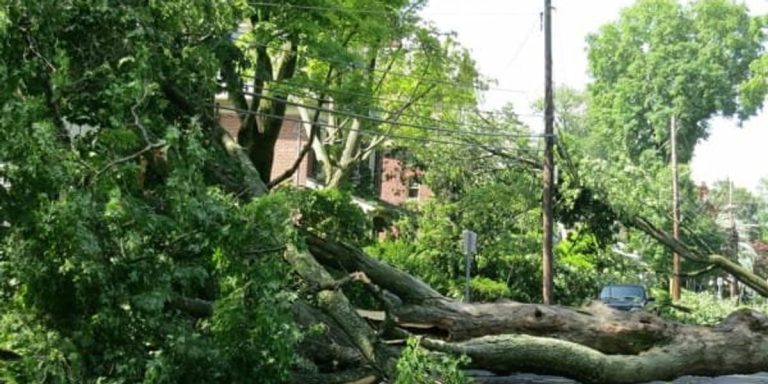A severe storm with destructive winds and hail slammed into North Texas on May 28, with widespread power outages reported in Dallas and Fort Worth, and an early-season heat wave adding to the misery.
About 800,000 customers were without power Tuesday, including about 390,000 in Dallas County, according to PowerOutage.us.
Dallas County Judge Clay Jenkins issued a disaster declaration and said it could be days before power is restored to most Oncor customers.
“At this time, we expect many Oncor customers will be without power for several days, and I have directed the Dallas District Attorney’s Office to prepare and sign a disaster declaration,” Jenkins tweeted.
Oncor said crews were available to respond to the outage but did not provide an estimate for when power was expected to be restored.
Wind gusts of 77 mph were recorded at Dallas Fort Worth International Airport early Tuesday, and power outages began increasing in the area. The outages began around 6 a.m.

The east side of Dallas was particularly hard hit, but areas from downtown to North Dallas and Irving sustained damage to trees, fences and even roofs, with residents reporting wind gusts of up to 90 mph.
Greenville Avenue still had power, but the residential areas east of Greenville Avenue were without power. All the coffee shops were busy, from White Rock Coffee on Northwest Highway to Starbucks on Greenville Avenue to Well Grounded on Garland Road.
The Dallas storm followed a string of tornadoes that struck Collin County on May 25, ripping through towns including Celina and Valley View.
Late May is the peak of tornado season, but recent storms have been exceptionally violent, producing very powerful tornadoes, said Victor Gencini, a meteorology professor at Northern Illinois University.
“Over the weekend we had hot, humid air, a lot of gasoline, a lot of storm fuel. We also had a very strong jet stream, which helps generate the wind shear forces necessary for these types of tornadoes,” Gensini said.
Harold Brooks, a senior scientist at the National Severe Storms Laboratory in Norman, Oklahoma, said the string of tornadoes over the past two months is due to a persistent pattern of warm, moist air at the northern edge of a heat dome that’s bringing mid-summer through late-May temperatures.

